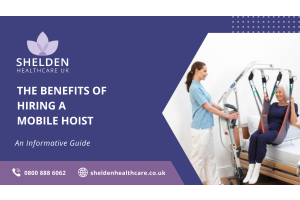Shelden Healthcare Blog
-
June 28, 2023 2516
Pain and discomfort can often lead to restless nights, making it imperative to find the right mattress tailored to your needs. In this guide, we provide practical advice, covering critical aspects from the importance of support and comfort to the significance of warranties, all to help you take a step towards restful, pain-free nights with the best mattress for arthritis UK.
-
May 03, 2023 4021
While the prospect of acquiring a hospital bed for free in the UK may initially seem appealing, it is worth examining all your options carefully. As you navigate this challenging situation, you might find that solutions offered by premium providers, such as high-quality hospital beds tailored to individual needs, present a more advantageous choice.
This article will guide you through the ins and outs of how to get a hospital bed for free UK and the alternatives, helping you make an informed decision in the best interest of your loved one's care.
-
April 14, 2023 380
In this blog post, we'll explore the benefits of mobile hoist hire and how it can make your life easier and more accessible. From increased safety to improved independence, read on to discover how this simple yet effective piece of equipment can transform your daily living.
-
February 17, 2023 1343
When it comes to providing comfort and care for someone who is ill or recovering, having the right hospital bed can make all the difference to the quality of someone's life because hospital beds are designed specifically to improve patient comfort and help with mobility.
In this blog post, we will answer the question "what is the best hospital bed for home use," walk through some of the key considerations when selecting a hospital bed and provide advice on what makes for an optimal choice. Read on to learn more.
-
January 24, 2023 1681
Often considered a "specialty item," these are special types of hospital beds that have been designed to accommodate larger patients. Whether due to obesity or another medical condition, many individuals require a bed with extra width, length and weight capacity for an increased level of comfort and safety.
But what is a bariatric bed and how can it make life easier for those who need one? In this blog post, we'll explore the features of bariatric beds so you can become more informed about the benefits they offer larger individuals in need.
-
December 20, 2022 15090
One of the biggest questions is: how long should you keep legs elevated to get optimal results? There's no one-size-fits-all answer because it will depend on each individual’s unique needs.
Fortunately, we have some guidelines and helpful tips that are applicable for most people looking to lower leg inflammation. With the right information at hand, it doesn't have to be complicated or time consuming process. Read on to learn more.
-
December 09, 2022 15439
One of the challenges caregivers face is keeping dementia patients in bed at night. This can be a difficult task because dementia patients may wander, become agitated or have sleep problems.
Fortunately, there are a few gentle strategies that can be used to help keep dementia patients in bed at night.
-
October 11, 2022 9156
Do you have an electric hospital bed at home? If so, you may be wondering how much electricity it uses. It's important to know this information, especially if you're trying to save money on your energy bill. In this blog post, we will discuss the average amount of power that an electric hospital bed uses and tips for how to reduce it. Keep reading to learn more!
-
September 29, 2022 4766
If you or someone you are caring for need help standing, a stand aid can be a lifesaver. But with so many different types on the market, which one is right for you?
This comprehensive guide will walk you through different options and help you decide which option is the best fit for your needs. We'll also cover important information such as how many carers to use stand aid with.
-
August 12, 2022 3474
When caring for a person who needs help transferring, it is important to use the right number of care workers. Too few can lead to an unsafe transfer, while too many can complicate the process and slow things down. In this blog post, we will discuss how many care workers are recommended for patient hoist transfers. We will also provide some tips for safe transfers. Keep reading to learn more!








